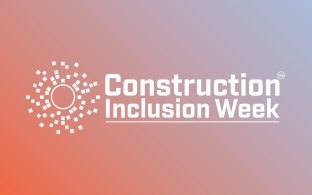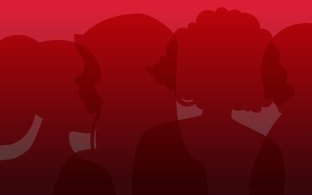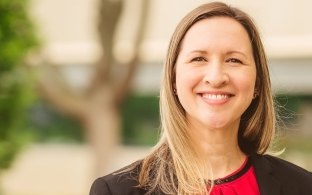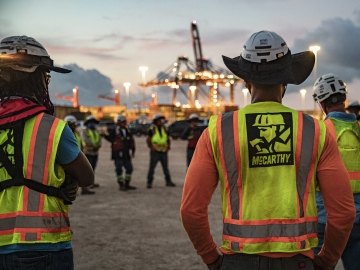Celebrating Black History Month
Regional VDC Director Shannon Lightfoot shares his personal experience with development and career path, his HBCU experience and cultivating a distinct personal brand.


While growing up on the south side of Chicago, I always looked forward to the annual trip with my parents and brother to experience the Circle City Classic in Indianapolis.
The showcase for some of the nation’s top historically black colleges and universities (HBCUs) like Grambling, Florida A&M, Jackson State and North Carolina AT&T was amazing. I enjoyed all the pageantry around the football games — especially the always thrilling “Battle of the Bands” and other cultural events. Those inspiring trips left a lasting impact on my life.
It taught me so much about the importance of HBCU culture and what that meant to African Americans like me.
It also helped lead me to Tennessee State, another HBCU my aunt Barbara attended in the 1970s and later became the Dance Team Director while working on her master’s degree. I was selected to attend a summer engineering concepts program there and immediately fell in love with a school whose alumni list includes six Olympic gold medalists, plus the legendary Oprah Winfrey and former NFL stars Ed “Too Tall” Jones, Claude Humphrey and Joe Gilliam.
Could I have made it to a 17-year career at McCarthy by enrolling in the engineering program of another university?
I’m quite sure I could have, but Tennessee State is where I met some of my life-long friends, including my future wife. It was a place where I was able to thrive in a great culture and proactively build my level of experience through various internships and opportunities.
My wife Shanell and I have two sons, 16-year-old Kellen and 9-year-old Kendall. We live near Atlanta and enjoy traveling, golf and sports — and I’m heavy into CrossFit while trying really hard to get better at pickleball.
We’ve been back to Tennessee State almost every year for homecoming, that’s always a big thing. You see all the people you grew up with and catch up on old times; we bring our kids back too. Just like I was introduced to the HBCU culture and all the rich history behind those schools, we wanted the same for our children.

Beginnings
My love for building probably began with my grandfather, a carpenter with Carpenters Local 10 in Chicago during the 1960s. I would hear stories about him from my mother Saundra, who noticed I was always making things or putting things together. I think that’s where I got a lot of my creativity.
My parents were college graduates and placed a heavy emphasis on education. My father, Michael, was the vice president for First Chicago NDB Corp., leading audit technology. My mother was a Regional Healthcare Program Coordinator for multiple organizations including the University of Chicago, Ounce of Prevention Fund and the American Cancer Society.

They were important role models and made sure I was able to experience so many great things growing up. I attended Mt. Carmel High School and remain proud to have been a contributing player in two of the school’s 15 state football championships.
My college choice was clearly influenced by my early HBCU exposure.
Before my time, a lot of folks like me couldn’t go to certain universities. They attended HBCUs, which were established out of necessity, to give young African Americans the opportunity to get degrees and go on to become doctors, lawyers, engineers and scientists.
This was one of the major educational and personal experiences that directly influenced my perspective and personal brand.
It helped introduce me to what HBCU life was all about, the friends you make, the opportunities and all the experiences. You see a lot of people who look like you and grew up with similar experiences. It’s inspiring to see so many great people who came before you and have gone on to make a lasting impression on the world. There’s a lot of history behind schools like that.

That’s something I’m passionate about, being able to support and help HBCU schools. I make it a priority to go back to TSU to mentor, recruit and find talented students to give opportunities to, just like I was given.
Balancing the engineering curriculum and sports activities was something I had to learn early on as a student-athlete. I was fortunate enough to play football at Tennessee State as a wide receiver from 2002-05. Those classics that I used to watch as a kid, now I was playing in them as a college football player.
My biggest highlight was playing in the Atlanta Classic vs. Florida A&M at the Georgia Dome. My whole family was there and being able to participate in one of the biggest games I had watched as a child meant everything to me.

From Architecture to Construction
My degree is in architectural engineering. I was always fascinated by building, designing, and drawing so I thought architecture was my path, but really it was more the hands-on side that I liked about it.
I remember when McCarthy’s lead recruiter at the time, R.J. Morris, came to see me at Tennessee State. I was looking for something different after having done several summer design internships with famed African American architect Wendell Campbell.
The part I really latched onto during my internships was being out in the field. I enjoyed talking to the superintendents and understanding what they were doing, looking at systems and punch lists and learning the equipment.
It was like I was in a different world, being part of something that actually was being created. I didn’t feel that in the design world, so it was eye-opening to see another side that I didn’t know much about.
Once I got an understanding of what McCarthy did and visited the team in St. Louis, I knew construction was what I wanted to do. I was one of the first HBCU graduates hired in the Central Region and worked as a project engineer under McCarthy legend Lloyd Flowers on my first project, the Federal Reserve Bank in St. Louis.
Lloyd soon began calling me “Hollywood,” and later would contact me every time he saw my name come up or spotted me in a photo. He was such a great mentor.
After my first year at McCarthy, I went back to TSU and recruited two other engineers — Javelle Redmond and Jonathan Sanders. We continue to stay close to Tennessee State to make sure we’re recruiting top talent and reaching out there.
At the end of that first project, I had an important decision to make. At the time, BIM (Building Information Modeling) was something new at McCarthy and Sue Stewart asked me if I wanted to be part of the BIM group.

That’s how I got into BIM and eventually followed VDC as my career path. I didn’t think it was going to be anything that lasted and thought I would eventually go back out to the field and continue on my operations career path.
I never realized it was something that would become much, much bigger.
My best career advice? Always be willing to challenge yourself and say ‘yes’ to the opportunities presented to you. Some younger folks may have their minds made up about what they want to do, but stepping out of your comfort zone can really open up career opportunities.
An eye-opening experience at McCarthy
Early in my career I was at a Shareholders’ event in St. Louis. Then-COO Scott Wittkop was talking, and he looked behind him at other executives on stage and said, “this is a problem, everybody up here looks like me.” When I heard that from one of the biggest leaders in our company, it made me feel like I was part of something really different and special.
I’ve seen that McCarthy is intentional about making sure everyone has opportunities. Where I’ve seen the growth over my 17 years here is that inclusiveness, where you’re giving opportunities to people of different races, backgrounds and ethnicities. The culture has changed so much that we’re looking at all different backgrounds and celebrating the many cultures that make up our McCarthy family throughout the year.
Before, we didn’t have that – and it’s very intentional our leadership has done that.
Employee ownership is another powerful part of our McCarthy culture. It was something I didn’t know much about when I was younger, but my father explained what it meant for career growth, retirement and financial well-being. I think about that every year for the stock price announcement and it’s not only the financial aspect, but how much it means to me personally to be an employee owner.
These are the people that I go to bat with every day, that help and support me. We’re all moving in the same direction because of our culture.
Riding the growth of construction tech
Once we understood BIM models and how we could use them to coordinate and plan better and reduce mistakes out in the field, it made me realize this was really something I wanted to do.
Technology was taking hold of our industry, helping us become much more efficient and productive with our time on these fast-paced jobs.
My generation and younger were getting hired and knew how to use some of these tech tools. You had a really powerful team with a lot of experience and knowledge, but now with the technology coming in to bring the project together.
It’s crazy how it has exploded over the last decade. There are so many different things out there now — solutions for MEP coordination, modeling and fabrication, for reality capture and layout.
We’ve transitioned from a paper-based company and business to a digital model-based approach for planning work. We build things virtually before building them physically and our VDC process is the center of that.
Being able to visualize things has been an important transition in getting better communication with our design partners, trade partners and — most importantly —with our clients who don’t live in this world day to day like we do.
Visualization is that common language we can all latch onto, to say “I see what you’re talking about.”

My VDC path has not come without challenges. Early on I was young and trying to gain buy-in from older people trying to grasp the concepts of BIM. It was convincing those more experienced and older than me that these tools were going to help them do what they do every day and make their job easier.
One clear memory was working with a project manager and pointing out a few things on a building enclosure mockup that he didn’t realize. I showed him a conflict with the steel and brick and immediately the light bulb went off in his head, I saw it on his face.
At that point, it encouraged me that what I was doing was actually making a difference.
We’d like to thank Shannon Lightfoot for sharing his inspiring story, career experience and background with us during our celebration of Black History Month.









